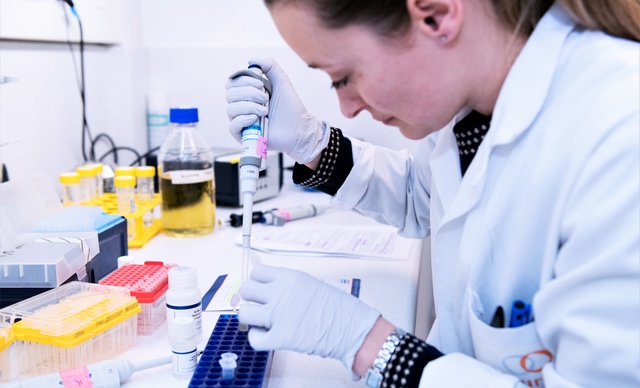Identification of a key enzyme for more effective and sustainable immunotherapies

Published in Nature Communications on June 29, a study led by the teams of Sebastian Amigorena, CNRS research director and head of the Immune Responses to Cancer Team (Institut Curie, Inserm) and Eliane Piaggio, Inserm research director and head of the Translational Immunotherapy Team (Institut Curie, Inserm), has just demonstrated that "Suv39h1", a histone lysine methyltransferase enzyme, plays a key role not only in the persistence of T lymphocytes, but also in their activation and exhaustion. Depletion and lack of persistence of these immune cells are major limitations of current immunotherapies, affecting their efficacy and durability. This study was conducted in collaboration with Mnemo Therapeutics*, Institut Curie's spin-off of which Sebastian Amigorena is a co-founder.
Previous work conducted by Sebastian Amigorena's team, which has been exclusively licensed to Mnemo Therapeutics, has already highlighted the key role of the Suv39h1 enzyme in the epigenetic regulation of immune cell memory. The researchers also demonstrated that deletion of Suv39h1 leads to enhanced immune cell memory and longer-lasting therapeutic responses. The research presented in this new study shows that Suv39h1 is a key factor in regulating T cell depletion.
As is well known, the potency of current therapies, such as immune checkpoint inhibitors (such as anti-PD-1[1]), is limited by repeated stimulation of T cells in a tumor-rich environment, resulting in T cell exhaustion. The current study shows that Suv39h1 acts as an epigenetic checkpoint inhibitor that, when coupled with anti-PD-1 therapy, results in increased T-cell activity and decreased T-cell exhaustion.
said Sebastian Amigorena.
The inactivation of Suv39h1 could therefore constitute a novel lever to improve T cell activation and persistence while decreasing their depletion. This discovery will enable Mnemo Therapeutics to develop new immunotherapies with increased durability and efficacy.
Limited potency, durability, and cancer-specific targets impede the efficacy of current immunotherapies, leading to off-target side effects and patient relapse. Alongside our EnfiniT Discovery Engine that identifies novel cancer targets, this research demonstrates Mnemo’s commitment to addressing multiple bottlenecks in the efficacy of immunotherapy, as well as bringing solutions to patients.
added Alain Maiore, co-founder and Chief Operating Officer of Mnemo Therapeutics.
[1] PD-1 is a protein present on the surface of T lymphocytes and is a component of the PD-1/PD-L1 immune checkpoint. The T cell can interact via PD-1 with a tumor cell with PD-L1 on its surface. This interaction inactivates the T cell and therefore inactivates one of the immune system's defense mechanisms against tumor cells. Blocking the immune checkpoint with anti-PD-1 or anti-PDL-1 antibodies, by preventing the interaction between PD-1/PD-L1, allows the immune system to lift its inactivation and to fight the tumor cell again.
|
Mnemo Therapeutics, Institut Curie spin-off company co-founded in 2019 with Memorial Sloan Kettering Cancer Center, specializes in the development of transformational immunotherapies that improve the body's ability to fight and overcome cancer. Since 2016, the company has benefited from Institut Curie's incubation program with support from the scientific founders in the various stages that led to the creation of the company. After a record-breaking Series A financing round in 2021, Mnemo Therapeutics continues its meteoric rise by choosing to pursue its collaborations with the Institut Curie. |



